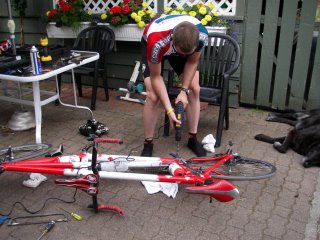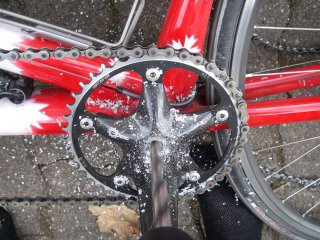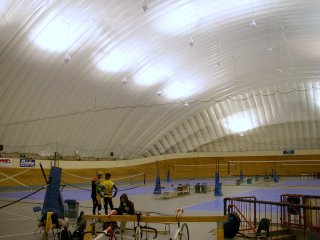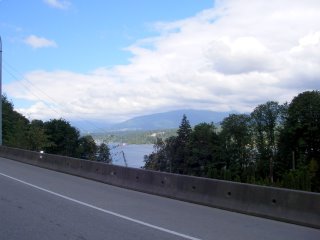
Originally I was having some second thoughts about taking the extra week to be able to participate in this training camp because a lot was happening at work this week. Today proved that I had nothing to worry about and that all of this training is going to pay off big. Things looked a little bleak from hearing what was going on in the office in the first couple of days, but my team pulled together and sorted out the problems that cropped up before the week was through. I should’ve known from the beginning that they would have no problems. As for the training camp, we have seen some incredible gains in a very short period of time. Although the individual skills of a tandem team are very important, putting two strong riders together will not always make a strong team. The team must learn to work together, anticipate the other’s movements, and most of all to trust each other (especially the stoker on the back!).
We have put a lot of time into honing some of the more technical aspects of track racing, such as maintaining a straight and steady line at high speed and doing a standing start. There are two types of starts, a standing start and a flying start. For the standing start, a person (usually a larger individual) stands behind the rider and holds onto his seat or frame and then the rider must start the race without any initial speed. This may not sound overly difficult at first, however you must remember that in track cycling the bike only has one gear and it runs on a fixed up. This means that the rider has to accelerate from 0 to around 55km/h in the same gear!
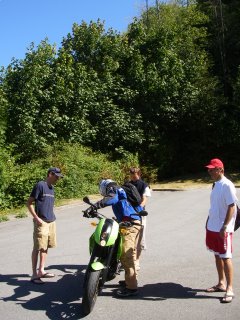 So, I finally got an itinerary of what the trip to Switzerland is going to look like. Apparently we have almost a week of acclimatization and training where we will be able to ride the track and ride the time trial and road race courses. The time trial course is apparently quite technical and short, neither of which are good for me. I tend to excel in the races where a really high, sustained effort is required because I am good at shutting out the pain and just driving forward. This course will have multiple turns and we will likely end up doing it 3 times meaning several turnarounds in addition to all of the turns on the course. To add to the excitement, they predict that the roads will be muddy and slippery because the locals are in harvest season right now… great. I am going to be playing the clip of Bobby Julich’s Tour de France ending time trial in my head :(
So, I finally got an itinerary of what the trip to Switzerland is going to look like. Apparently we have almost a week of acclimatization and training where we will be able to ride the track and ride the time trial and road race courses. The time trial course is apparently quite technical and short, neither of which are good for me. I tend to excel in the races where a really high, sustained effort is required because I am good at shutting out the pain and just driving forward. This course will have multiple turns and we will likely end up doing it 3 times meaning several turnarounds in addition to all of the turns on the course. To add to the excitement, they predict that the roads will be muddy and slippery because the locals are in harvest season right now… great. I am going to be playing the clip of Bobby Julich’s Tour de France ending time trial in my head :(Finally, my quote of the day goes to our coach for the training camp (the guy on the motor bike) “You know what they say… Small headlights Big penis!”
